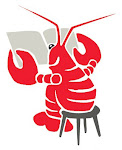by Brynn Smith-Raska
Editorial Assistant
It is an indisputable fact that every season has a distinct smell. Fall is imbued with the rich aroma of falling leaves. Winter is bitter and harsh with the its essence of snow. Spring time tantalizes the nose with flowers and freshly cut grass. All these wonderful smells of nature permeate the world around us for 8 months out of the year. Then summer rolls around and the scents that waft through the air become strangely less natural and much more – delicious!
Anyone who has suffered through a long and sweltering summer knows the oppressive heat and glaring sun are all worth it because of what the warmth brings with it – outdoor dining. May through August have long been famous for being the seasonal hosts to barbecues, picnics and baseball games; hot dogs and ice cream cones and lemonade and potato salad are the star players of these warm month past-times.
Unfortunately, despite their scrumptiousness, these famous summer meals leave something to be desired in the nutrition department. Combine the unhealthy nature of the junk food which we often indulge in during the summer months, with the long and sometimes unregimented days that kids enjoy while out of school, and you have a recipe for disaster!
A recent study from Ohio State University has found that, contrary to what one might expect, kids often gain weight in the summer. When kids are no longer in school, under the watchful eye of teachers and coaches, their eating habits get off track and their lifestyles can become sedentary. Schools have made great strides in keeping junk food out of classrooms and hallways, but when kids are left to their own devices, apples and granola are quickly replaced with popsicles and soda.
In the study, researchers measured the increase in the BMI of students during the school year as compared to the summer months, and found the number rose more staggeringly during the summer break. The best way to reverse these findings is to eat healthfully and exercise. But everyone knows talking about living well is a lot easier than implementing healthy choices into a daily routine, especially without the vigilant eye of Mom, Dad, teacher or coach.
That's why YUM: Your Ultimate Manual for Good Nutrition is such a fantastic tool for living well – aimed at kids, it puts the power in their hands. In addition from providing information about food (where it comes from, how it grows), author and registered dietitian – and mom – Daina Kalnins offers kids-friendly recipes for healthy snacks and alternatives to unhealthy favorites.
There are some really interesting facts about eating and hunger, too. Did you know that sometimes when you feel hungry, you might in reality just be thirsty? Especially in the summer when we all sweat from the sun's hot rays, it's easy to become dehydrated. So next time your child goes to grab a bag of chips, suggest that they take a drink of water and see if the hunger goes away. They may be surprised to find they don't want that snack anymore!
My favorite part of the book (and one kids are sure to love) is the “What Celebs Say” section: we learn from Zac Efron about his efforts to maintain a healthy lifestyle, and the NBA's Tony Parrish's strategy of living well by avoiding a lot of sweets and working out. If busy celebs can find the time to stay fit through the summer months, why can't we all give it a go?
With recipes for breakfast, lunch and dinner, along with great ideas for working out and feeling good, YUM will seamlessly guide your child (and the whole family) through the delicious summer months. Here are five tips from Daina Kalnins and YUM to kick start a healthy lifestyle this summer:
- When having a picnic or a barbecue, try using whole wheat bread and buns with your sandwiches, hot dogs and hamburgers.
- Calcium is crucial for everyone, especially for growing bodies. Luckily, frozen yogurt is a great source of calcium, and deliciously refreshing, too.
- Try something new! It's no secret that football players sometimes take ballet classes to improve their balance and agility. If you play basketball during the school year, why not try diving classes? And if you figure skate in the winter, maybe you could give tennis a swing. Your body will feel great, and who knows, maybe you'll discover you have a knack for kick-boxing!
- I'm sure you've heard that breakfast is the most important meal of the day, but it's easy to forget about it when you don't have to wake up early for school. But that doesn't mean breakfast isn't just as important in the summer. Eating a healthy breakfast is a meal with two perks – it will make you more energetic and give you a healthy level of body fat.
- Instead of firing up the grill and making hamburgers, try YUM's more nutritious – and delicious! - recipe for Lentil Burgers. They're sure to be a hit!
Bon Apetit!
.jpg)
.jpg)










